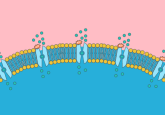Stop: hammer time! Identifying the lethal mechanism of Clostridium septicum

Bacteria that kill cells through a hammer-like mechanism may soon be stopped in their tracks.
Researchers from The Australian National University (ANU; ACT, Australia) have shed new light on a family of bacteria that cause infections such as sepsis, gangrene and tetanus. The team hope that the results of their research will enable more treatment options for a bacterial infection that is rare (with less than 1000 cases every year in the USA), but “incredibly lethal”.
“While we understand a select few members of this family of bacteria, we were interested in what the others were doing to cause infection,” explains senior author, Si Ming Man. “One in particular we looked at for this study, Clostridium septicum, kills four out of five people who get it within two days.”
Man and his team were able to determine that on human infection, C. septicum releases α-toxin that can quickly kill cells via a hammer-like action, whereby it ‘punches’ holes in the cells’ surface. This mechanism relies on α-toxin binding to membrane proteins anchored to glycosylphosphatidylinositol, where it oligomerizes to form a membrane pore, through which magnesium and potassium ions can escape from the cell. Immune cells then respond under direct orders of the immune system; however, this rapid response is futile.
 Electric shocks manipulate cellular biofilm compositions
Electric shocks manipulate cellular biofilm compositions
Researchers use electrochemical signals to stimulate the proliferation of different cells in biofilms, thereby controlling their growth.
“The intention of the immune system is good – it’s trying to fight against the bacteria – but the infected cells also explode and die,” Man continues. “When the bacteria [has] spread and you have lots of dying cells all over the body that’s when it can lead to sepsis and shock. That is why patients die very rapidly.”
The team also identified that when the inflammasome triggered by the immune sensor NLRP3, which detects the ion efflux from infected cells, is inhibited C. septicum-induced lethality is prevented in mice.
There are very few effective treatment options that exist for this infection, but the team’s elucidation of this mechanism of action provides new hope that novel, life-saving therapies could be available to patients in future.
“Our research shows there might be new therapies we could develop, such as using certain drugs to neutralize the toxin,” concludes Man. “We’ve also shown there are drugs in the clinical trial stage right now that could block a key immune receptor that recognizes the toxin, blocking our own immune system from responding to this toxin too violently.”





